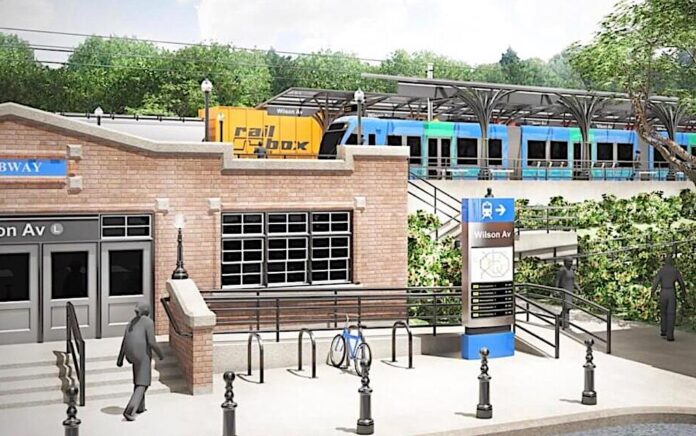
Light rail chosen for Brooklyn-Queens connector
New York’s Metropolitan Transportation Authority will develop Interborough Express-branded light rail services along the 22.5 km freight corridor between Bay Ridge in Brooklyn and Jackson Heights in Queens. The existing freight line links Bay Ridge docks at 65th Street Yard, which is served by a train ferry across the Hudson River, with short line operator New York & Atlantic Railway’s main marshaling yard at Fresh Pond in Queens; it then turns north to reach Jackson Heights. [railwaygazette.com]
White Pass & Yukon restart Alaska-Canada train
The White Pass & Yukon Railway will resume trips between Alaska and Canada this summer, the first such operations since before the Covid pandemic, One-way passenger service from Skagway, Alaska to Fraser, British Columbia, will run daily from early May to early October, with return or continuing service by bus. Service to Carcross and Bennet, Yukon Territory, will begin in late May and continue through mid-September. [trains.com]
Brightline Florida sets ridership and sales records
Aided by its seasonal Polar Express promotion and discounted $10 rides celebrating the opening of stations at Boca Raton and Aventura, Brightline’s Miami-West Palm Beach service carried 183,920 passengers in December 2022, generating $5.1 million of ticket revenue. Both are monthly records since service began in early 2018. The new stations only opened the week before Christmas, but they contributed nearly 10% to the December ridership total. [trains.com]
River-adjacent NYC stations suffer air quality loss
New research from New York University (NYU) Grossman School of Medicine found subway stations near river tunnels can have significantly higher concentrations of potentially dangerous particles in what they call a “river-tunnel effect.” Concentrations of particles can be 80% to 130% higher in stations neighboring river tunnels versus those stations that were two or three stop further from the rivers. Researchers hope their study will help prioritize mitigation and cleaning efforts. [masstransitmag.com]




